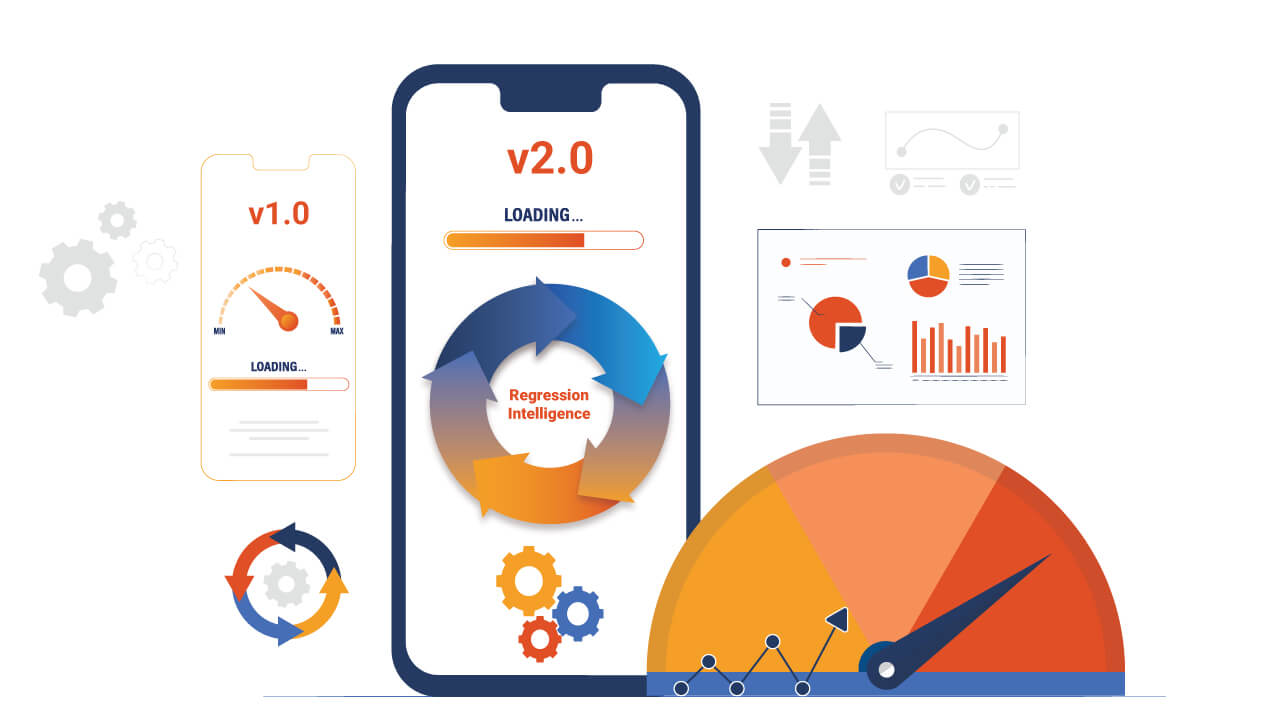Introduction
Delivering high-quality products is more critical than ever in software development. Bugs and glitches can lead to user dissatisfaction, financial loss, and damage to reputation. Effective software testing ensures that applications function as intended before they reach the end-user.
What is Unit Testing?
Unit testing involves testing individual components or pieces of code (units) to verify that each functions correctly in isolation. By focusing on the smallest parts of an application, developers can ensure that each unit performs well before moving on to more extensive tests.
Purpose of Unit Testing
1. Early Bug Detection: Identifies issues early, making fixing them easier and affordable.
2. Simplifies Integration: Ensures that each unit functions correctly before integrating them, reducing the chances of system failures.
3. Documentation: Provides documentation about how the units are supposed to work.
Benefits of Unit Testing
1. Improves Code Quality: Encourages developers to write better code with fewer bugs.
2. Facilitates Change: It makes modifying and refactoring code easier without introducing new bugs.
3. Saves Time and Cost: Detects issues early, reducing the cost and time spent on debugging later stages.
Read: Why is Testing Early in the SDLC Important?
How to Perform Unit Testing
Performing unit testing effectively requires a systematic approach to ensure each unit of code functions well. Below is a comprehensive guide on how to carry out unit testing:
Step 1: Understand the Unit's Functionality
Before writing any test cases, it's essential to clearly understand what the unit (function, method, or class) is supposed to do.
1. Analyze Requirements: Review the software requirements and specifications related to the unit.
2. Study the Code: Examine the code to understand its logic, inputs, outputs, and dependencies.
3. Identify Test Scenarios: Determine all possible scenarios, including edge cases and error conditions.
Step 2: Choose the Right Unit Testing Framework
Selecting an appropriate testing framework is crucial for writing and managing your tests efficiently.
1. Programming Language Consideration: Pick a framework that is compatible with the programming language used (e.g., JUnit for Java, NUnit for C#, pytest for Python).
2. Features and Support: Consider the features offered by the framework, such as ease of use, community support, and integration capabilities.
Step 3: Set Up the Testing Environment
Prepare an isolated environment where you can execute tests without interference.
1. Install Necessary Tools: Set up the testing framework and any additional libraries or tools required.
2. Configure the Environment: Ensure that the environment mirrors the conditions under which the code will run.
3. Version Control Integration: Use a version control system like Git to manage changes to both code and tests.
Step 4: Write Test Cases
Develop test cases that thoroughly check the unit's functionality.
1. Follow the AAA Pattern: Arrange (set up the test), Act (execute the unit), Assert (verify the result).
# Example in Python using pytest def test_add(): # Arrange x = 5 y = 3 expected_result = 8 # Act result = add(x, y) # Assert assert result == expected_result
2. Test One Thing at a Time: Each test case should focus on a single aspect of the unit's behavior.
3. Use Descriptive Names: Name your test methods to clearly indicate what they are testing.
Step 5: Implement Mocking and Stubbing
Isolate the unit by mocking or stubbing external dependencies.
1. Mock Objects: Use mock objects to simulate complex behavior of real objects.
2. Stub Methods: Replace parts of the system under test with stubs that return fixed responses.
// Example in Java using Mockito @Test public void testGetUserName() { UserService userService = mock(UserService.class); when(userService.getUserName(1)).thenReturn("John Doe"); assertEquals("John Doe", userService.getUserName(1)); }Step 6: Run the Tests
Execute the test suite to validate the unit's behavior.
1. Run Tests Frequently: Execute tests after every significant code change.
2. Automate Test Execution: Use scripts or integrate with continuous integration (CI) tools to automate testing.
# Example of running tests in Python pytest test_module.pyStep 7: Analyze Test Results
Review the outcomes to identify any defects or issues.
1. Investigate Failures: For any failed tests, determine the cause and fix the underlying issue.
2. Check for False Positives/Negatives: Ensure the tests correctly report pass and fail statuses.
Step 8: Refactor and Retest
Based on the test results, refactor the code or tests as necessary.
1. Code Refactoring: Improve the code structure without changing its functionality.
2. Update Tests: Modify test cases to align with any changes in requirements or code logic.
3. Regression Testing: Re-run tests to confirm that changes haven't introduced new issues.
Step 9: Maintain the Test Suite
Keep your tests relevant and up to date.
1. Regular Updates: Add new tests for new features and remove tests for deprecated functionalities.
2. Optimize Tests: Refine tests to improve performance and reliability.
3. Document Tests: Maintain documentation for your test cases to aid future development.
Unit Testing Strategies
Effective unit testing isn’t just about writing tests, it’s about writing the right tests. Here are key strategies developers use:
- Test-Driven Development (TDD): Write the unit test before writing the code. This ensures the code meets the test case.
- Behavior-Driven Development (BDD): Focuses on app behavior from a user's perspective using readable test syntax.
- Isolate Units with Mocks/Stubs: Replace external dependencies (like databases or APIs) with mock objects to ensure the test only evaluates the unit logic.
- Small and Focused Tests: Each test should validate a single function or method, not multiple components or behaviors.
- Consistent Naming Conventions: Clear and consistent test names make it easier to identify purpose and failure points.
- Run Tests Frequently: Integrate unit tests into CI/CD pipelines to catch regressions early.
Unit Test Example
Let’s say you’re testing a function that calculates the sum of two numbers. Here's a simple example in Python:
# my_math.py def add(a, b): return a + b # test_my_math.py import unittest from my_math import add class TestAddFunction(unittest.TestCase): def test_add_positive_numbers(self): self.assertEqual(add(2, 3), 5) def test_add_negative_numbers(self): self.assertEqual(add(-1, -1), -2) def test_add_zero(self): self.assertEqual(add(0, 5), 5) if __name__ == '__main__': unittest.main()This demonstrates the basics: clear inputs, expected outputs, and test coverage across typical and edge cases.
Disadvantages of Unit Testing
While unit testing offers significant benefits, it also has its limitations:
- Limited Scope: Unit tests only verify individual components. They don’t catch integration issues between modules.
- Can’t Catch UI/UX Issues: You won’t detect visual bugs, layout problems, or broken flows.
- Requires Maintenance: As the codebase evolves, tests may become outdated and need constant updates.
- False Sense of Security: A passing unit test suite doesn’t guarantee the entire application works correctly.
- Initial Setup Overhead: Setting up testing frameworks and writing thorough tests takes upfront time and planning.
Types of Unit Testing
Unit testing can be categorized based on purpose and approach:
- Manual Unit Testing: Involves developers running code snippets and validating results manually. Useful in prototyping or early dev stages.
- Automated Unit Testing: Scripts are written using testing frameworks (like JUnit, NUnit, or pytest) to run tests automatically.
- White-box Testing: Developers write tests based on internal logic and structure of the code.
- Parameterized Unit Testing: A single test is run with multiple input values to ensure broader coverage.
- Regression Unit Testing: After code changes, unit tests ensure new changes don’t break existing functionality.
Difference Between Unit Testing and Other Types
Each type of testing plays a role, but unit testing is the foundation, ensuring that every building block works before they’re assembled.
Best Practices for Unit Testing
Write Independent Tests
1. No Order Dependency: Tests should not rely on the execution order.
2. Isolated Environment: Each test should set up its environment and data.
Use Continuous Integration
1. Automated Testing Pipeline: Integrate unit tests into a CI/CD pipeline to automate testing.
2. Immediate Feedback: Developers receive quick notifications about test results, facilitating prompt fixes.
Aim for High Code Coverage
1. Measure Coverage: Use tools to measure how much of the code is exercised by tests.
2. Quality Over Quantity: While high coverage is desirable, focus on meaningful tests that cover critical paths.
Handle Exceptions and Error Conditions
1. Negative Testing: Write tests that validate how the unit handles invalid inputs and unexpected situations.
2. Assert Exception Handling: Ensure that exceptions are raised and handled as expected.
// Example in C# using NUnit [Test] public void Divide_ByZero_ThrowsException() { Assert.Throws<DivideByZeroException>(() => calculator.Divide(10, 0)); }Keep Tests Fast
1. Quick Execution: Run Unit tests quickly to encourage frequent execution.
2. Avoid External Resources: Do not rely on databases, file systems, or network resources.
Check out: AI Based Testing - Benefits, Challenges, Best Practices and More
Common Challenges and Solutions
Dealing with Legacy Code
1. Lack of Tests: Start by writing tests for the most critical parts of the code.
2. Hard-to-Test Code: Refactor code to make it more testable, such as breaking down large methods.
Flaky Tests
1. Inconsistent Results: Investigate and fix tests that fail intermittently.
2. Environmental Dependencies: Ensure tests do not depend on external states or configurations.
Over-Mocking
1. Excessive Mocking: While mocking is useful, overuse can make tests brittle and less meaningful.
2. Balance: Mock only what is necessary to isolate the unit.
Leveraging Automation Testing in Unit Testing
Automation testing plays a pivotal role in unit testing by:
1. Enhancing Efficiency: Automating repetitive tests saves time and reduces human error.
2. Improving Consistency: Automated tests perform the same operations every time, ensuring consistent results.
3. Facilitating Continuous Integration: Automated unit tests can be easily integrated into CI/CD pipelines.
When Manual Testing is Appropriate
While automation is key in unit testing, manual testing is valuable in scenarios such as:
1. Exploratory Testing: Understanding how new code behaves in unanticipated scenarios.
2. Usability and UI Testing: Assessing the user interface and user experience aspects.
3. Complex Logic Verification: Manually verifying complex algorithms where automated assertions are insufficient.
Conclusion
Unit testing is an indispensable part of modern software development. It helps ensure that individual components function correctly, leading to more stable and reliable applications. By investing time in unit testing, developers can save resources in the long run and deliver higher-quality software products.
HeadSpin empowers teams to deliver flawless applications with its robust platform, which supports manual and automation testing across a wide range of devices, environments, and use cases. From ensuring the precision of unit tests to optimizing performance and functionality across the software development lifecycle, HeadSpin provides unparalleled insights and capabilities.
FAQs
Q1. What is the difference between unit testing and integration testing?
Ans: Unit testing focuses on testing individual units or components in isolation, ensuring they work correctly on their own. Integration testing tests the interaction between different units or modules to identify issues in their interfaces and combined functionality.
Q2. Can unit testing replace other forms of testing?
Ans: No, unit testing cannot replace other forms of testing, such as, such as integration, system, or acceptance testing. Each testing level serves a unique purpose, providing a comprehensive testing strategy to ensure software quality.
Q3. How much code coverage is sufficient in unit testing?
Ans: While aiming for high code coverage is good, 100% coverage is not always practical or necessary. Focusing on critical and complex parts of the code is more important. Typically, 70-80% coverage is considered adequate, but this can vary based on the project's requirements.
Q4. Is unit testing applicable only to object-oriented programming languages?
Ans: No, unit testing is not limited to object-oriented languages. It can be applied to procedural, functional, and other programming paradigms. The key is that the units being tested are the smallest testable parts of the application.






































.webp)





-1280X720-Final-2.jpg)






